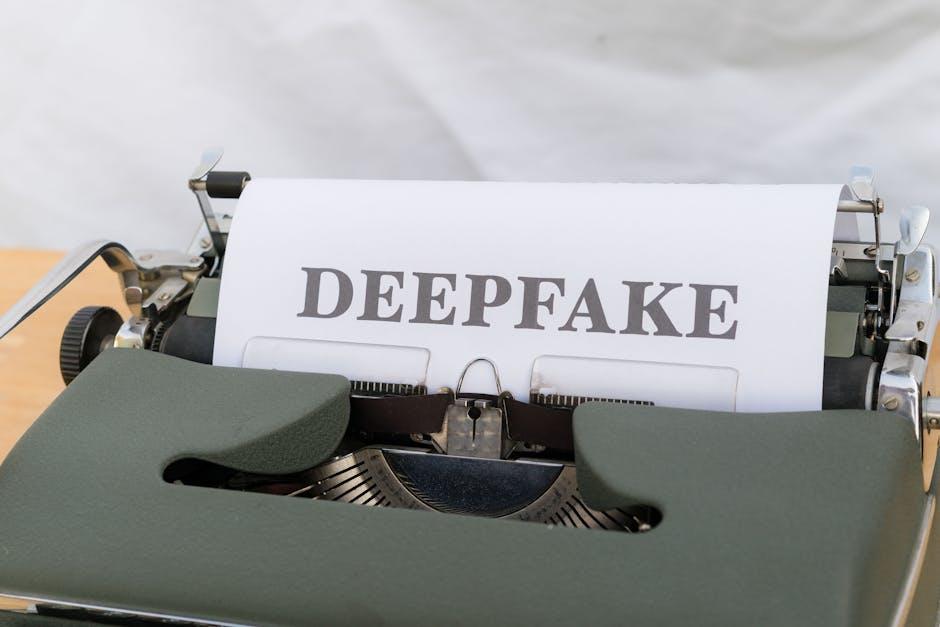In the ever-evolving landscape of cinema, technology has always played a pivotal role in shaping the stories we see on screen. From the early days of practical effects to the digital wizardry of CGI, filmmakers have continually pushed the boundaries of what’s possible. Now, a new player has entered the scene: deepfake technology. This groundbreaking innovation is not just altering the way characters are portrayed but is also challenging our perceptions of authenticity and creativity in filmmaking. As we delve into this fascinating intersection of technology and artistry, we explore how deepfakes are redefining character portrayals, offering both unprecedented opportunities and complex ethical dilemmas for the industry.
Reimagining Classic Roles with Digital Precision
Deepfake technology is revolutionizing the way filmmakers approach iconic characters, offering unprecedented flexibility and creativity. By using AI-driven tools, creators can digitally resurrect beloved actors or transform current stars into historical figures with stunning realism. This digital precision allows for a seamless blend of old and new, bringing fresh perspectives to timeless roles.
- Authentic Resurrections: Imagine witnessing a legendary actor reprising a role decades after their prime.
- Historical Accuracy: Enabling actors to embody historical figures with enhanced visual fidelity.
- Creative Freedom: Offering directors the ability to experiment with diverse casting choices.
While ethical considerations remain a hot topic, the potential for storytelling innovation is undeniable. As the technology matures, it opens up new avenues for artistic expression, reshaping our cinematic experiences.

The Ethical Implications of Virtual Performances
The rise of deepfake technology in film production brings a myriad of ethical challenges to the forefront. Actors’ rights and consent become critical issues as digital likenesses can be manipulated without their explicit approval. This raises questions about the ownership of one’s image and the potential for misuse in ways that could damage an actor’s reputation or legacy.
Moreover, there’s the concern of authenticity in storytelling. When audiences can’t discern between genuine performances and digital fabrications, it might undermine the emotional connection and trust that films traditionally foster. Considerations include:
- Transparency: Should filmmakers disclose when deepfake technology is used?
- Artistic Integrity: How does digital manipulation affect the original vision of a performance?
- Legal Frameworks: Are current laws sufficient to protect individuals’ rights in this digital landscape?
As the line between reality and fiction blurs, the film industry must navigate these ethical dilemmas carefully to maintain both creative freedom and respect for individual rights.

Balancing Innovation with Authenticity in Storytelling
As deepfake technology finds its way into the film industry, filmmakers are tasked with the challenge of maintaining a delicate balance between innovation and authenticity. This revolutionary tool allows for seamless character portrayals, enabling actors to transcend time and age or even bring back legendary figures for new performances. However, with these advancements comes the responsibility to preserve the integrity of storytelling.
- Authenticity: Audiences crave genuine connections with characters. While deepfakes can enhance visual storytelling, they must be used judiciously to avoid undermining the emotional depth that actors bring to their roles.
- Innovation: Directors and producers can push creative boundaries by experimenting with new narratives and character dynamics that were previously impossible. This opens up exciting opportunities for storytelling, provided it complements the story’s essence.
the magic of cinema lies in its ability to blend technological advancements with the timeless art of storytelling. It’s a dance between the old and the new, where the authenticity of human emotion meets the limitless potential of innovation.

Guidelines for Responsible Use in Film Production
As the allure of deepfake technology grows in the film industry, it is imperative to establish clear ethical boundaries. Filmmakers must prioritize consent, ensuring that actors are fully informed and agree to any digital manipulation of their likeness. This involves detailed contracts and ongoing communication throughout the production process.
- Respect for the Original Actor: Use deepfakes to enhance, not replace, performances.
- Transparency with Audiences: Clearly disclose when deepfake technology is used, maintaining trust with viewers.
- Preservation of Historical Accuracy: Avoid altering historical figures without thorough research and respect for the facts.
By adhering to these guidelines, the film industry can harness the creative potential of deepfakes while maintaining ethical integrity and respect for all parties involved.

